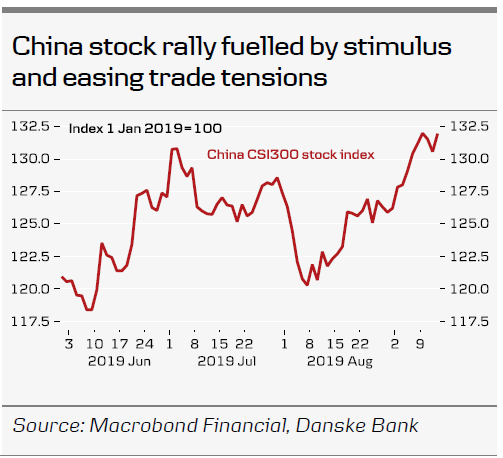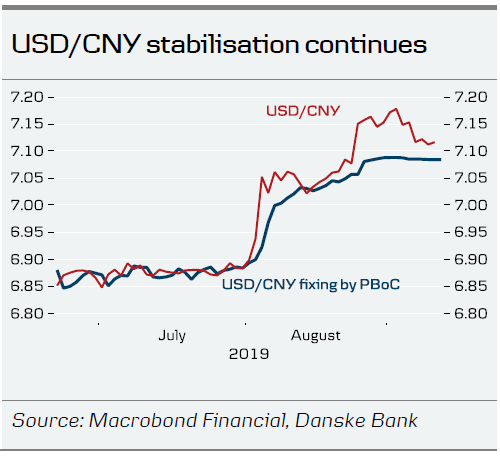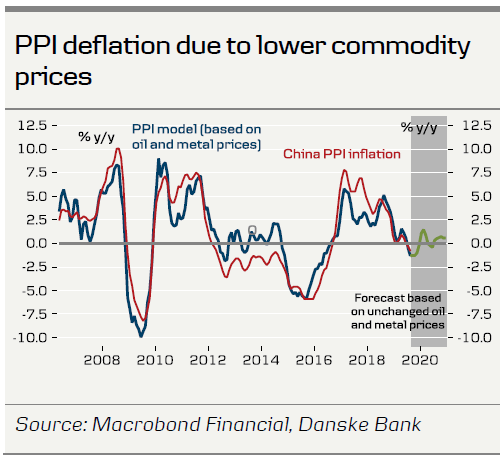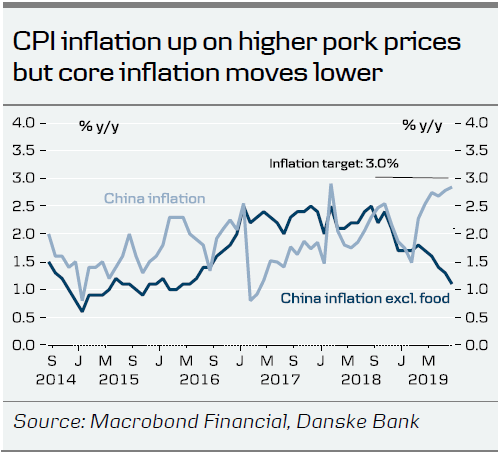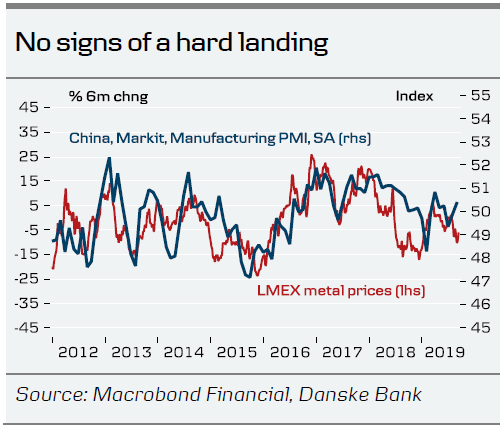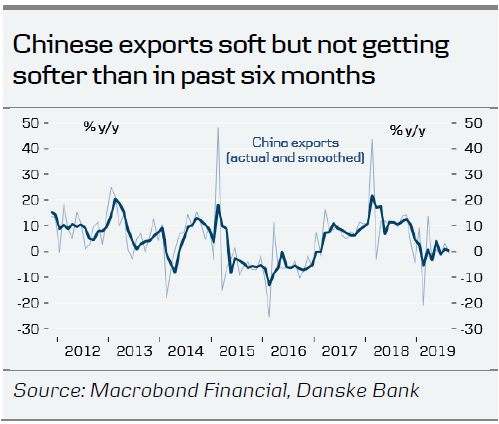- Trump’s tariff delay improves conditions for October trade talks, but the hurdles to reach a trade deal remain.
- Chinese stocks rallied again on easing trade tensions and policy stimulus. USD/CNY stabilised just above 7.10. We expect it to stay here for some time.
- PPI moves further into deflation territory but does not signal a hard landing. A cut in the RRR rate signals more efforts to sustain growth at a minimum of 6.0%.
Trump delays tariff hike in a ‘gesture of goodwill’
The main news this week was US President Donald Trump’s decision to delay a tariff hike. In a tweet Wednesday night Trump wrote that ‘At the request of the Vice Premier of China, Liu He, and due to the fact that the People’s Republic of China will be celebrating their 70th anniversary on October 1st, we have agreed as a gesture of good will, to move the increased Tariffs on 250 Billion Dollars worth of goods (25% to 30%) from October 1st to October 15th’. The day before China had exempted 16 US goods from tariffs, although it was only a very small part worth USD1.6bn out of a total of around USD110bn. In addition, the exemptions did not include the goods where China has the most political leverage on Trump: agricultural goods and autos.
On Thursday, Bloomberg reported that Trump advisers were considering a so-called interim deal with China that would delay and even roll back some tariffs in exchange for Chinese purchases of agricultural products and commitments on intellectual property rights. Last night Trump said about an interim deal, ‘It’s something we would consider’.
Comment.How should we interpret the new initiatives? I think China has made it clear that if the US carried out the tariff increase on the 70-year anniversary of the PRC, it would be very difficult to make any progress in October. Moreover, by exempting some US goods for tariffs it made it easier for Trump to postpone the tariff increase without losing face.
While it is positive that the two sides both show the will to create good conditions for the trade talks in October, it does not change the fact that some big hurdles remain , which is why there has been no progress since the break-down in early May. China is not likely to change its ‘red lines’, which includes a demand that tariffs are rolled back to the starting point and a refusal to make changes to its laws as part of the deal. These are key demands on the US side, as the White House wants a strong enforcement mechanism.
However, the fact that there is willingness on both sides to make a deal makes it a close call . An interim deal seems to be a possibility now, although we do not know how China will respond to this. Our baseline is still no deal before the election with a 60% probability, but it does leave a 40% probability of a deal. As we get closer to the US election, Trump could decide to make the necessary compromises to close a deal that includes big Chinese purchases of agricultural goods benefitting voters in swing states of Ohio, Wisconsin and Wisconsin and a big tariff decline on autos, which would give him some tailwind in Michigan, another swing state.
Chinese stocks rally on easing trade tensions and stimulus
The Chinese stock markets gained further this week due to the easing tensions on the trade front and more stimulus being announced. Last week PBoC cut the Reserve Requirement Ratio by 0.5 percentage points and the National Development and Reform Commission has signalled that more easing is on its way. The fact that China so far has been able to cope with the trade war without a sharp slowdown has boosted confidence that it has the tools to weather the trade war even if it gets worse. China’s inclusion factor in the MSCI indices will also go up again in November from 15% to 20%, which should give more inflow to the Chinese stocks. Finally, China this week announced that caps on the QFII (Qualified Foreign Institutional Investor) and RQFII programs would be lifted. It opens up for more investment flows from foreign investors.
Comment. We are positive on Chinese stocks in the medium to long term, as we believe the factors mentioned above will continue to support Chinese A-shares. However, we expect continued high volatility in the short term due to the ebbs and flows in the trade war. While sentiment is better now, we have seen many times before that it does not last. At the same time, though, we do not expect a scenario of a significant further escalation in the trade war, as Trump will get more cautious as the damage to the US economy is becoming more visible by the day and he cannot afford a big slowdown going into an election year.
PPI deflation deepens but slowdown still manageable
Data on Chinese producer prices for August showed a further move into deflation territory with a decline of 0.8% from -0.3% in July. As the top chart shows, this mainly reflects lower commodity prices as these explain around 80-90% of swings in PPI. CPI inflation was unchanged at 2.8% y/y due to, on the one hand, a big rise in pork prices of 47% y/y caused by the African swine fever and, on the other hand, a drop in core inflation. China’s export growth for August stayed around zero as it has done for six months.
Comment. While PPI deflation always draws some negative headlines, we are not too worried about it. It does weigh on profit growth but it should not lead to a big decline in profits at the current rate of deflation and our model suggests that we are close to the bottom unless we see renewed declines in commodity price inflation. The conclusion from our update this week of China Leading Indicators is also that a broad range of economic data points to weakness in Chinese growth but not a hard landing.
Other China news this week
USD/CNY continues to stabilise just above 7.10 as trade tensions ease. We expect it to trade between 7.10 and 7.20 for some time.
Huawei founder Ren Zhengfei surprised this week by proposing to sell the current 5G know-how to a Western firm as a way to address security concerns. In another story related to the US-China tech war, Nikkei Asia Review reported on how Huawei and other Chinese tech companies are working hard to divert supplies of tech components away from US producers to companies in countries such as South Korea, Japan and Germany. It seems inevitable that US tech companies will pay a price for the US-China tech war.
On a similar note, US universities take a hit from fewer Chinese students. FT reports that a growing number of universities are looking to buy insurance policies against a drop in revenue from international students. The US-China confrontation has led to a 10% decline in new foreign student enrolments two years in a row.




